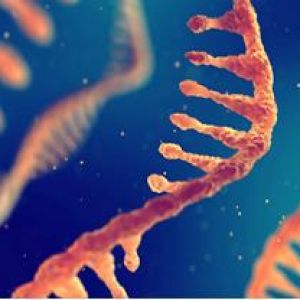CRISPR/Cas9—Genetic Scissor to Shape the FuturePosted by Candy Swift on November 30th, 2020 On October 7, 2020, the 2020 Nobel Prize in Chemistry was announced. French biochemist Emmanuelle Charpentier and American biologist Jennifer Doudna won this year's award for their contributions to the new generation of gene editing technology—Clustered Regularly Interspaced Short Palindromic Repeats (CRISPR). Emmanuel Carpentier and Jennifer Dudner developed one of the sharpest tools in genetic technology called CRISPR/Cas9. Using this technology, researchers can change the DNA of animals, plants, and microorganisms with extreme precision, which has a revolutionary impact on life sciences, and can help researchers develop new cancer treatments, and make the dream of curing genetic diseases a reality.
Gene editing technology, generally speaking, is to accurately change the genome sequence through gene editing tools. It’s known that DNA is a double-stranded, and gene editing tools are like a pair of scissors, which can accurately insert, delete, and modify the target gene at a certain position on the chain. As a disruptive technology, the application prospect of gene editing is actually very broad. For example, gene editing technology is the key technology of gene therapy. Many major genetic diseases caused by gene mutations can be cured if the wrong DNA sequence is corrected at the gene level through gene editing. “At present, scientists have successfully performed gene editing for gene therapy in animal models for many hereditary diseases such as hyperammonemia, hemophilia, thalassemia, congenital amaurosis, Duchenne muscular dystrophy, which can effectively improve the treatment of disease.” said a scientist working at Creative Biolabs, a biotech company focusing on gene therapy development services.
CRISPR/Cas9 is the third generation of genome-directed editing technology following zinc finger endonuclease (ZFN) and transcription activator-like effector nuclease (TALEN). Compared with the previous two generations of technologies, CRISPR/Cas9 has the advantages of low cost, easy production, fast and efficient, so it has quickly become popular in laboratories around the world, becoming an effective tool in scientific research, medical and other fields. The CRISPR/Cas9 gene editing system is known as one of the most important biological discoveries of this century. In 2015, Science named it an annual breakthrough, and the scientists who contributed to the birth of this technology also won the Breakthrough Prize known as the Scientific Oscar, as well as the Gruber Genetics Prize and the Warren Alpert Foundation Prize.
CRISPRs are clusters of regularly spaced short palindromic repeats, which are repeated sequences found in bacterial genes. These sequences are distributed with special DNA fragments obtained by bacteria from invading viruses, which are used to identify the invading viruses by genetic markers. When the virus invades again, the bacteria can use the obtained material to produce an RNA fragment complementary to the virus sequence. This guide RNA and DNA shearing enzyme Cas cooperate to recognize the virus fragment and remove it, thereby preventing virus replication. Cas enzyme is encoded by CRISPR-associated genes connected to guide RNA. By designing a guide RNA to combine with a specific site in the cell genome, researchers can locate the Cas enzyme to the gene site of interest for cutting. The commonly used type of Cas enzyme is Cas9. DNA cutting will trigger DNA repair, allowing to precisely edit one site of interest.
CRISPR/Cas9 has already contributed to research in various fields, covering the treatment of tumors, HIV, Huntington’s disease, Lyme disease, malaria, as well as plant genetic modification. For example, Huntington's disease, a family-dominant genetic disease, is caused by gene mutations or the excessive expansion of the CAG trinucleotide repeats of the fourth pair of chromosomal DNA, resulting in continuous degeneration of brain nerve cells, leading to symptoms such as unstable emotions and uncontrollable twitches. In June 2017, CRISPR technology brought new surprises to treatment of this disease. In a paper published in Clinical Investigation, scientists found that in mice with Huntington's disease, the CRISPR system can edit some genes that produce toxic protein aggregates in the mouse brain. After shearing, the accumulated toxic protein gradually disappeared within a few weeks and the exercise ability of diseased mice did improve. Therefore, researchers believe that the CRISPR system is expected to cure Huntington's disease and open up a new path for the study of neurodegenerative diseases. However, in order to measure the safety of this kind of gene editing, rigorous testing of the long-term effects and safety of gene editing is still required. Although this idea is still in practice, it is already conceivable that CRISPR/Cas9 will bring more breakthrough to our medical career in the future. With the deepening of the understanding of the CRISPR/Cas system, people can use it to perform more types of gene editing tasks. CRISPR/Cas will lead the current life science research into a new era. Like it? Share it!More by this author |


